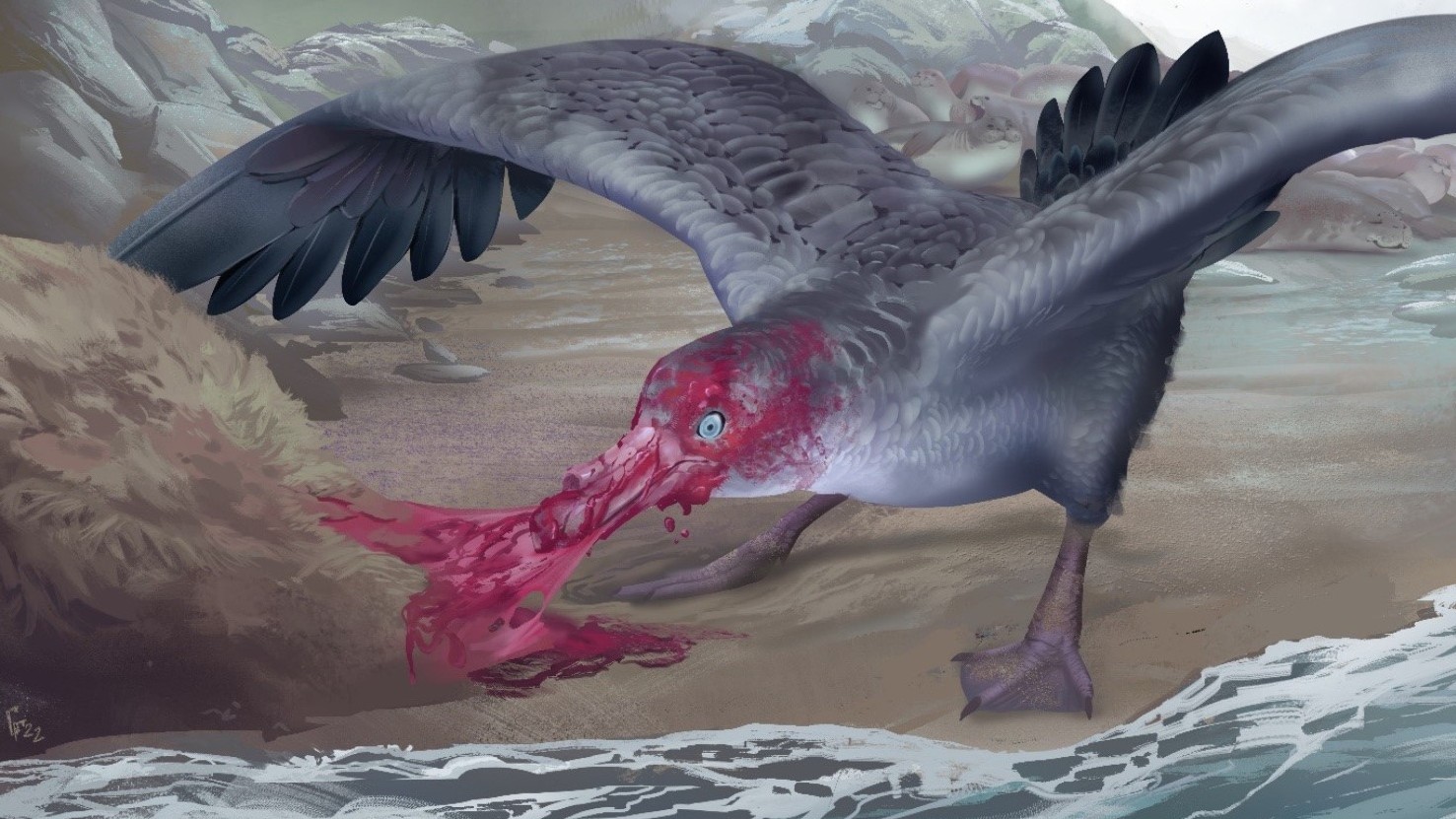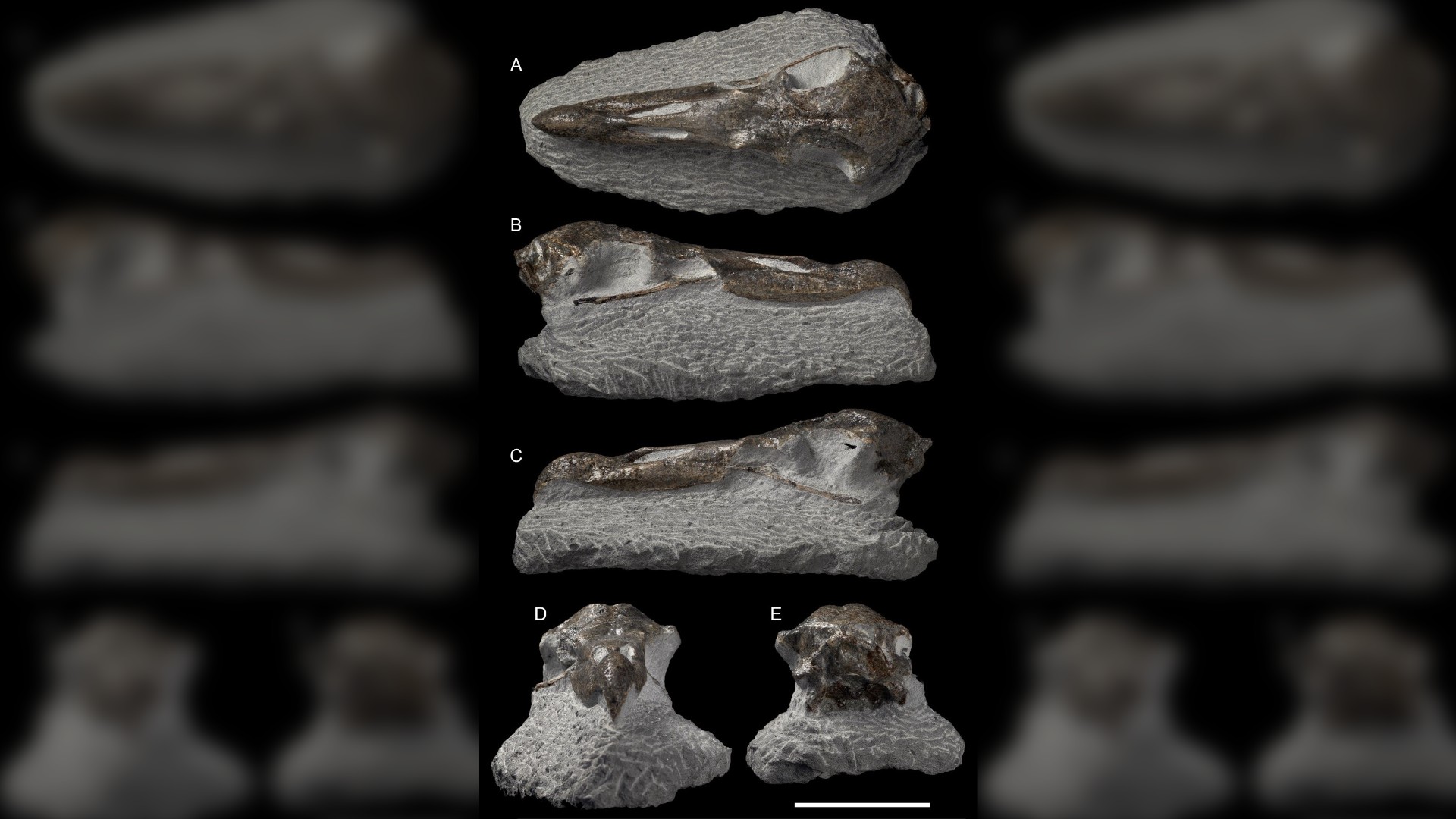3 million years ago, this brutish giant petrel likely eviscerated dead seals with its knife-like beak
Fossils from New Zealand reveal the existence of a giant petrel with a wicked sharp beak that lived 3 million years ago.
About 3 million years ago, giant petrels terrorized the skies and seas of the Southern Hemisphere with their deadly hooked bills and piercing eyes, a new study on a previously unknown bird species finds.
The discovery — based on a well-preserved skull and weathered humerus (upper wing bone) of the ancient predator from New Zealand's North Island — marks the only extinct giant petrel species on record, the researchers reported in a study published Jan. 30 in the journal Taxonomy.
The Tangahoe Formation, where they found the remains, "continues to provide outstanding seabird fossils and is becoming an important piece of the puzzle to understand the evolution and biogeography of seabirds in New Zealand and beyond," the team wrote in the study.
Amateur fossil hunter Alastair Johnson discovered the skull in 2017 and found the humerus two years later in a different spot along the rock formation. The researchers named the newly described species Macronectes tinae, in honor of Johnson's late partner, Tina King. "This giant petrel skull was her favourite fossil, hence the homage," they noted in the study.
As the first distinct evidence of an extinct giant petrel species, M. tinae offers paleontologists insight into how its modern relatives evolved. Although the now-extinct M. tinae is part of the giant petrel genus (Macronectes), it was actually smaller than the modern species Macronectes giganteus and Macronectes halli, which also live in the Southern Hemisphere.
Related: Monster bird fossils unearthed in Antarctica
The Southern giant petrel (M. giganteus) and Northern giant petrel (M. halli) can grow to about 3 feet (1 meter) long from beak to tail, with wingspans sometimes reaching more than 6 feet (1.8 m). Since scientists have limited fossil evidence of M. tinae, it's hard to know exactly how big the bird was, study co-author Rodrigo Salvador, a paleontologist at UiT, The Arctic University of Norway, told Live Science. But based on the fossils we do have, he estimates that M. tinae was about the size of the smallest giant petrels alive today. That would mean the bird had a wingspan of around 5 feet (1.5 meters) across — nothing to scoff at.
Get the world’s most fascinating discoveries delivered straight to your inbox.
Size-wise, giant petrels are actually an anomaly — most other petrels are slightly smaller than ducks. That means M. tinae's smaller body size isn't surprising, Daniel Ksepka, a paleontologist at the Bruce Museum in Connecticut who wasn't involved in the new research, told Live Science. Because giant petrels are so much larger than the rest of their family, known as Procellariidae, it stands to reason that they've been growing over time, Ksepka said.
But giant petrels have another advantage over other petrels. Many petrel species can't walk well on land due to their skimpy little legs, so they fly around when hunting, skimming or diving into the ocean for food when they spot prey. Giant petrels, on the other hand, have strong legs and wide feet that allow them to walk on land to scavenge for carrion and hunt smaller animals. And they don't use their big beaks to politely poke at dead animals; they often really go to town in a carcass, covering themselves in blood and guts.
"They will not hesitate to put their entire face inside the seal and eat," Ksepka said.
It's possible that M. tinae also enjoyed a face full of blood and guts, based on the sinister-looking beak it sported, Ksepka said. And because none of the other petrel species do this, the authors had an artist depict the newfound species in all its brutishness, featuring M. tinae in a gory, seal-eating scene, Salvador said.
The Tangahoe Formation is typically made up of fine-grained sediment, which helped preserve a lot of fossils, including birds, mammals and invertebrates, Salvador said. But this rock layer may offer more than just a link to the past.
During the late Pliocene epoch (5.3 million to 2.5 million years ago), when these fossils were deposited, temperatures were a few degrees Celsius higher in New Zealand than they are today, Salvador said. And as climate change gets worse, that's a future we might be headed toward again.
"People might not really be caring too much about what giant petrels looked like 2 million or 3 million years ago," Ksepka said. "But understanding how different groups of animals were distributed in a warmer period of Earth history may help us predict how things could change in the future."

Ethan Freedman is a science and nature journalist based in New York City, reporting on climate, ecology, the future and the built environment. He went to Tufts University, where he majored in biology and environmental studies, and has a master's degree in science journalism from New York University.




